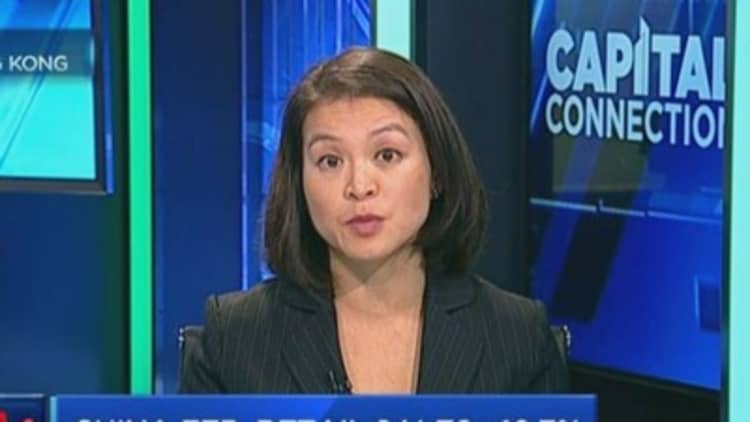
A flurry of Chinese economic data released on Wednesday came in worse than expected, somewhat justifying Beijing's decision to inject aggressive doses of stimulus in recent months and raising expectations of more to come.
Retail sales grew 10.7 percent in the January-February period from the year earlier, according to data from the National Bureau of Statistics, lower than expectations for an 11.7 percent increase.
Meanwhile, industrial output rose an annual 6.8 percent in the period, also missing the 7.8 percent forecast.
Fixed-asset investment, a crucial driver of the Chinese economy, rose 13.9 percent in January and February from a year ago, also under estimates for a 15 percent gain.
China combines its January and February data releases for investment, retail sales and factory output to minimize distortions from the Lunar New Year holiday.
The data followed a mixed bag of inflation readings on Tuesday, which showed consumer inflation for February beating forecasts, but wholesale inflation stuck in deflation for nearly three years.
"For sure, we have been expecting a softer start to 2015. The numbers across the board were slightly softer than we expected," Donna Kwok, senior China economist at UBS, told CNBC.
China's economy has been hamstrung by sluggish exports, weak consumption and a slowing property sector.
Last week, Beijing set its 2015 growth target at around 7 percent, lower than the 7.5 percent target for 2014. The world's second-largest economy grew at 7.4 percent last year, the lowest rate in 24 years.
To support growth, the People's Bank of China has unleashed monetary stimulus three times since November – by the way of two interest rate cuts and reducing the reserve requirements of major banks.
"What we actually need to see is a further interest rate cut, of which we're expecting one or two more this year just to keep down real financing cost in the economy. And to counter the ongoing capital outflows, we also need further liquidity provisioning; and to do that, the PBOC can also provide RRR cuts, we're expecting at least two more this year to counter and keep base money supply stable," Kwok said.
China's Shanghai Composite index held on to a 0.2 percent gain on the news, while the Australian dollar went as low as $0.7590 before bouncing back up to $0.7595.

